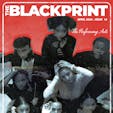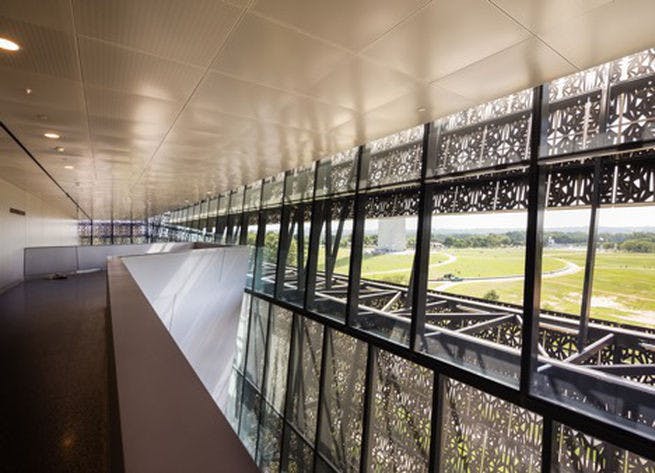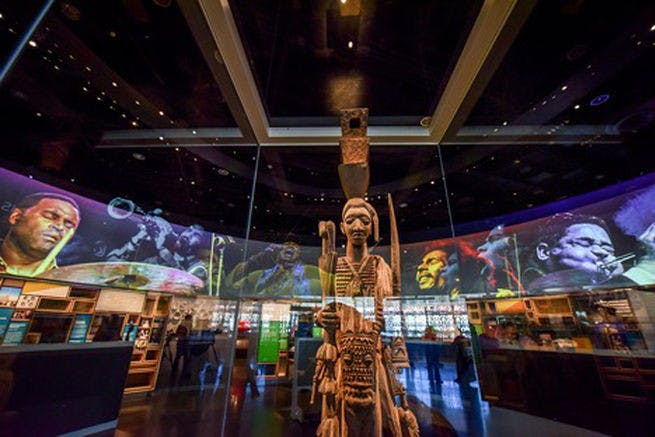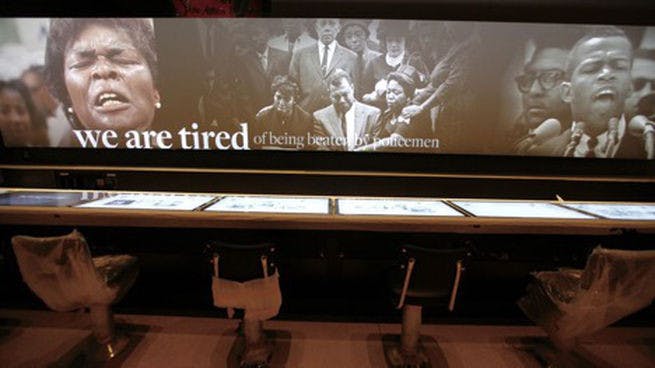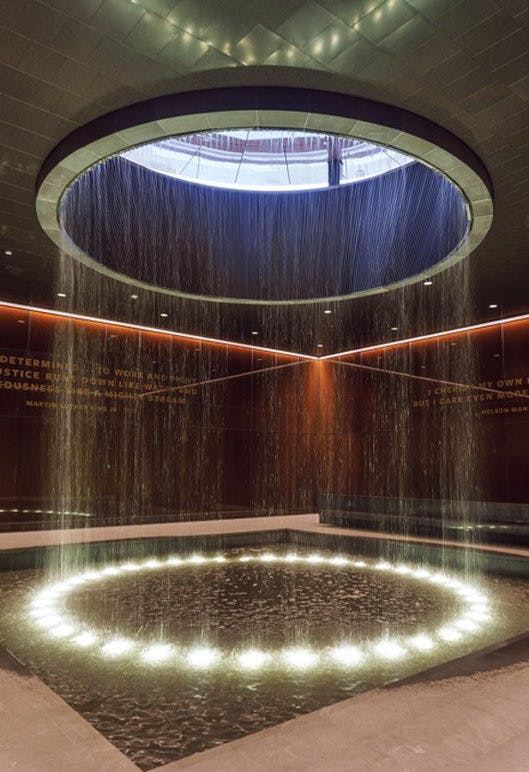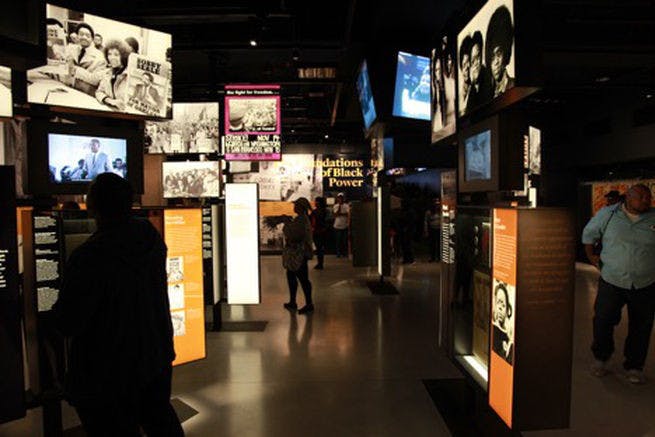BY: ALEXIS ARNOLD

Throughout history, African-Americans have accomplished many firsts, but one achievement in particular has set a high standard for all that will come after.

(Dezeen)
The new National Museum of African-American History and Culture (NMAAHC) is the first and only national museum devoted exclusively to the documentation of African-American life, history and culture. It was established as an Act of Congress in 2003 and finally completed on September 24, 2016.
What struck me most upon arrival at the museum was the building's unique architecture. It is unlike any of the other Smithsonians on the Mall. The non-traditional shape challenges what more conventional museums have done. The bronze-colored lattice that envelops the building pays homage to the ironworking of enslaved African-Americans. Furthermore, the natural lighting that pours in symbolizes the openness that the museum hopes to promote.
The lobby was not excessively decorated, but I later realized that the most amazing portions of the museum lie within its exhibits. My friends and I arbitrarily decided to start on the top floor and work our way down, but as a result we saw everything in reverse chronological order. Since the upper galleries are reserved for community and culture, the first exhibit we saw was dedicated to African American achievement and influence in media and the performing arts. When I saw this exhibit, my mouth fell open in awe because I was astounded that TV shows that my family and I watched, like "The Fresh Prince of Bel-Air," "The Boondocks" and "Girlfriends" were all on display. I had to stop myself from cheering at scenes I knew by heart because this was the first time I had seen my own immediate culture in a museum. There were actors and actresses that I knew well, as well as others I'd never heard of. It was the first time I had ever seen the shows and films that I value as an African-American validated in this incredible and official way.
As we descended to the lower floors, I saw many other exhibits that displayed parts of my culture I never realized were worthy of documentation. There was one exhibit that taught about the history and importance of step-dance, but it was also interactive and allowed visitors to actually learn a step routine. Another display featured church hats and biographies on influential designers. In an exhibit about The Bronx, visitors could view a pair of turntables and a boombox, and learn about the origins of hip-hop. There were even pieces worn by black musicians, from Sammy Davis Jr.'s tap shoes to Jimi Hendrix's vest.

(Antwaun Sargent via Twitter)
There was also an extensive section dedicated to African-Americans in sports. A wall of replica bronze, silver and gold medals commemorated all of the Olympic medals won by black athletes. The hall was lined with bronze statutes that took the image of sports legends like Jesse Owens, Jackie Robinson and my idols, Venus and Serena Williams. I had been to other museums and seen statues of presidents and war heroes, but I was filled with joy at seeing two people, who I've admired since I was a kid, being honored for the barriers that they broke down. Because of them I play tennis. Because of them I always play to win and never back down.

(Sha Sha via Pinterest)
The bottom floors, by far, that were the most moving.
A dimly lit hallway leads patrons through exhibits that document the Trans-Atlantic Slave Trade and the Middle Passage. I was overwhelmed with emotion when I saw the artifacts on display, such as the wreckage of a slave ship and the actual shackles that were used. With slow tears rolling down my face, I walked through the maze of African-American history. I read quotations from slaves and letters that were written during the time. I walked through a one-room slave house and saw bowls used to grind sugar.
I saw Emmett Till's original coffin, and I sat at a replica of the Greensboro lunch counter. The unique exhibits revealed to me the history I've known in a new light, as well as the history that is left out of our textbooks. I finally released the hand I had been holding to my chest and wiped the tears from my face after I finished moving through the entire exhibition. On the way out, one of the guides recommended we go to the Contemplative Court - which that was exactly what I needed.
The rushing water and angelic light helped to calm me, along with support from my friends. This space is so necessary to allow visitors to reflect on their powerful journey in a peaceful way. I swear I could almost see the hope in the inspirational words that surrounded me. Being able to actually visualize what my ancestors had to endure, how hard my people had fight, and just how far we had come was a completely transformative experience. I realized that, as a black girl attending a private institution of higher learning, I am living the dream so many people fought for me to have. I have to keep moving forward and working my hardest. But this museum has reminded me to never forget where I came from and why I can even be where I am.
I encourage everyone to visit this museum, any chance you have. I am aware that there is currently a Hamilton-like fervor around this museum, and tickets are sold out through March. But, there are more opportunities. The museum offers free Advance Time Passes for school, student, religious and community-based organizations with groups of 10 or more members. Or, you can camp out on Constitution Ave. and try to get a Same Day pass, which are distributed every morning at 9:15 a.m. The tickets are free and the experience is imperative to every American, no matter who you are. Remember, those who do not learn from history are doomed to repeat it. So I ask you, at this tumultuous time in our history: to learn, to remember, but most importantly to go.
Cover image: The New York Times

